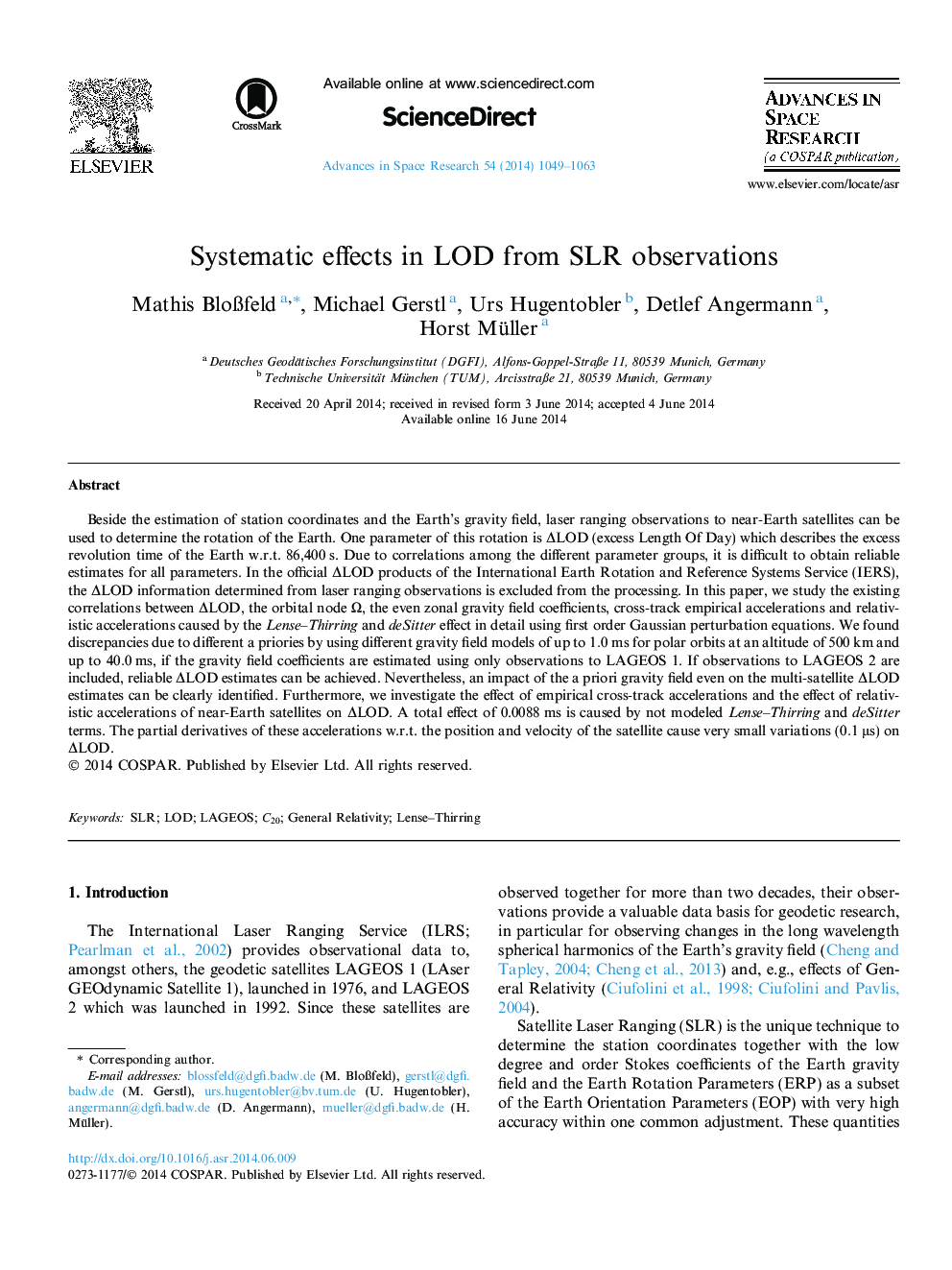| Article ID | Journal | Published Year | Pages | File Type |
|---|---|---|---|---|
| 1764800 | Advances in Space Research | 2014 | 15 Pages |
Beside the estimation of station coordinates and the Earth’s gravity field, laser ranging observations to near-Earth satellites can be used to determine the rotation of the Earth. One parameter of this rotation is ΔΔLOD (excess Length Of Day) which describes the excess revolution time of the Earth w.r.t. 86,400 s. Due to correlations among the different parameter groups, it is difficult to obtain reliable estimates for all parameters. In the official ΔΔLOD products of the International Earth Rotation and Reference Systems Service (IERS), the ΔΔLOD information determined from laser ranging observations is excluded from the processing. In this paper, we study the existing correlations between ΔΔLOD, the orbital node ΩΩ, the even zonal gravity field coefficients, cross-track empirical accelerations and relativistic accelerations caused by the Lense–Thirring and deSitter effect in detail using first order Gaussian perturbation equations. We found discrepancies due to different a priories by using different gravity field models of up to 1.0ms for polar orbits at an altitude of 500 km and up to 40.0ms, if the gravity field coefficients are estimated using only observations to LAGEOS 1. If observations to LAGEOS 2 are included, reliable ΔΔLOD estimates can be achieved. Nevertheless, an impact of the a priori gravity field even on the multi-satellite ΔΔLOD estimates can be clearly identified. Furthermore, we investigate the effect of empirical cross-track accelerations and the effect of relativistic accelerations of near-Earth satellites on ΔΔLOD. A total effect of 0.0088 ms is caused by not modeled Lense–Thirring and deSitter terms. The partial derivatives of these accelerations w.r.t. the position and velocity of the satellite cause very small variations (0.1μs) on ΔΔLOD.
